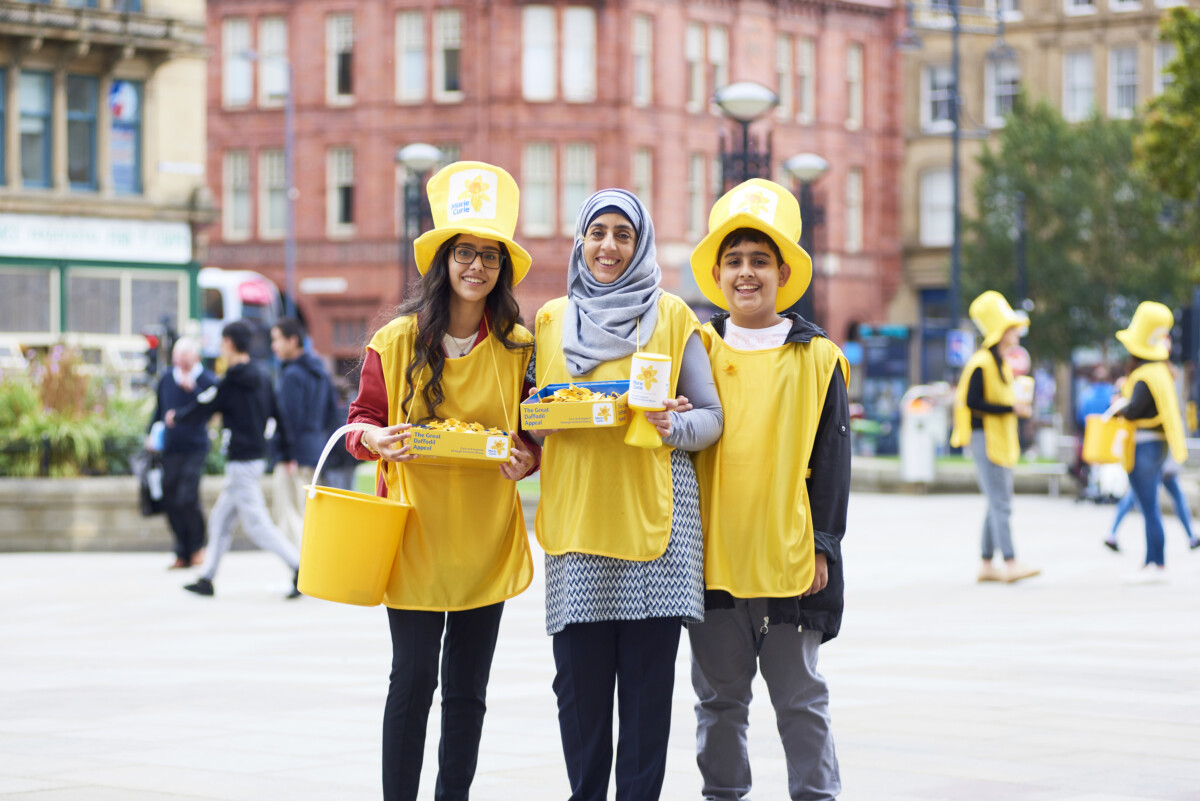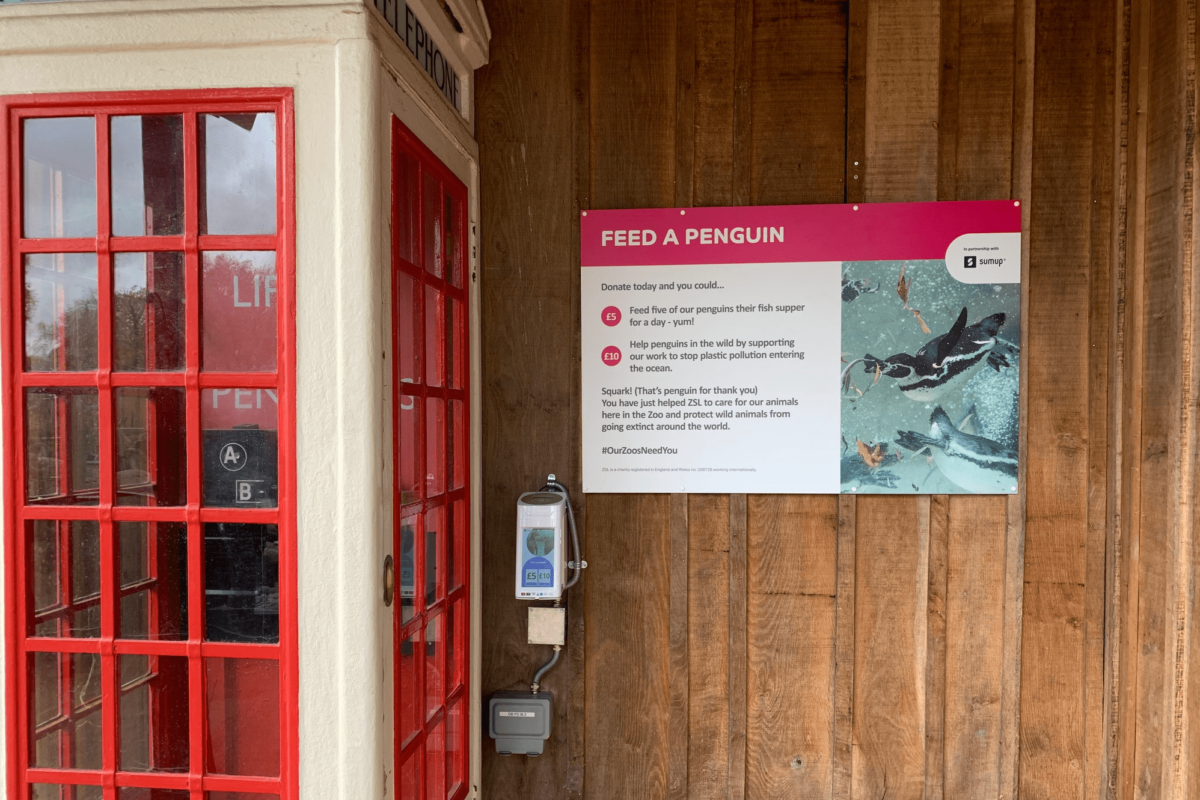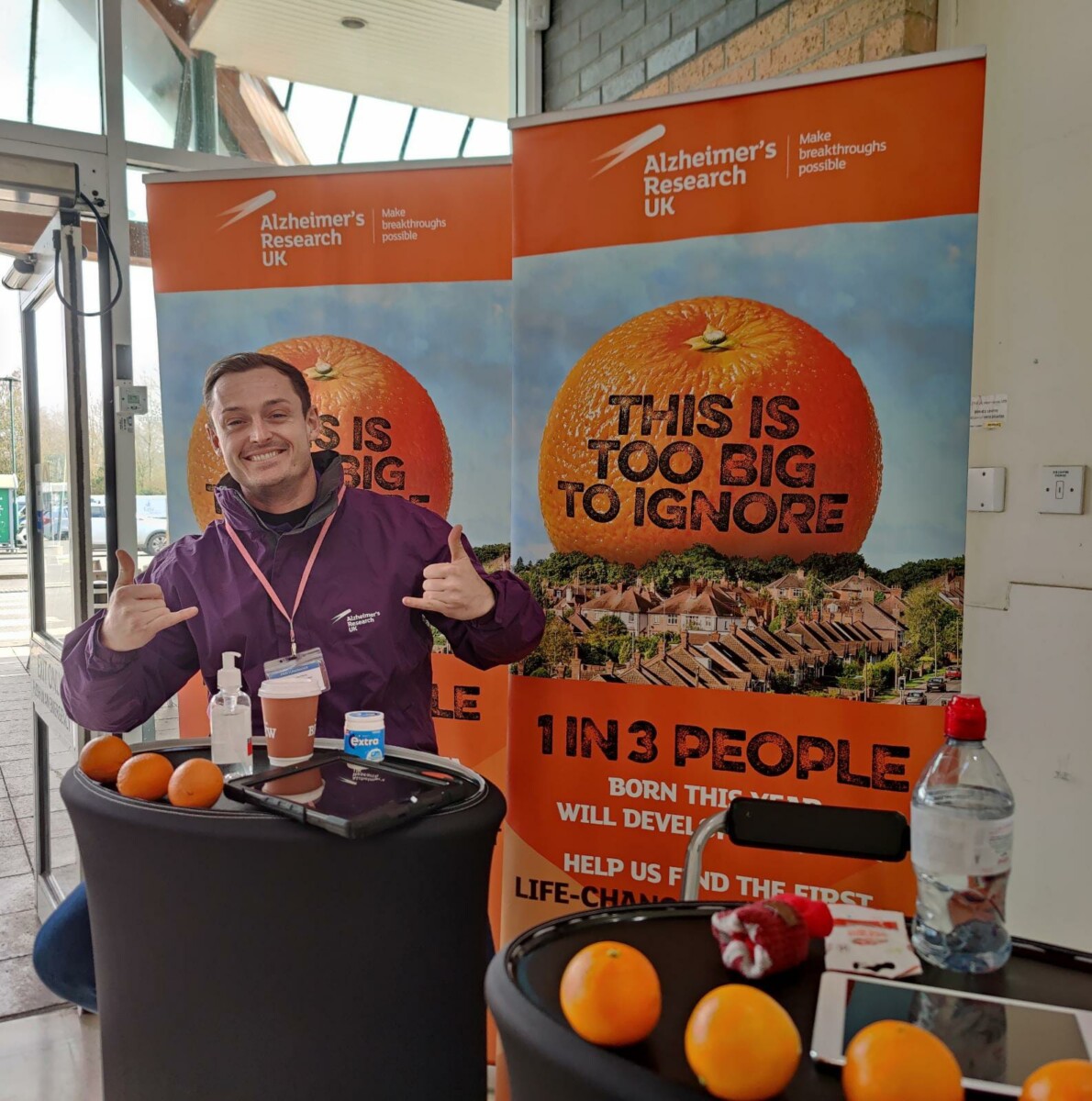Lots of charities are offering contactless donations so how is it performing? We take a look at the experiences of four, from ZSL’s zoos’ static donation points, to SSAFA’s event fundraising, Alzheimer’s Research UK’s face-to-face fundraising, and Marie Curie’s public collections for this year’s Great Daffodil Appeal.

Marie Curie – Great Daffodil Appeal 2022
Marie Curie began looking at cashless solutions ahead of the 2020 Great Daffodil Appeal, the charity’s annual fundraising campaign which takes place every March. They worked with two companies initially, leasing 30 units from each company, and buying 30 extras – giving them a total of 90 units as part of a trial.
Due to the pandemic, they were unable to test the units fully and effectively over the campaign, and due to ongoing restrictions in subsequent years, only able to return to collections activity on any significant scale in this year’s (2022) Great Daffodil Appeal.
Speaking about this year’s campaign Jacquelyn Lucas, Senior Campaigns Manager at Marie Curie says:
“With restrictions easing in late summer/autumn of 2021 we began planning our return to Public Collections for this year’s Great Daffodil Appeal.
“We expected the downturn in people carrying cash was going to have increased since 2020, particularly as people were being encouraged more and more in retail settings to use contactless rather than cash.
“We gained approval for the short-term rental of further units and took the decision to rent 200 additional units over a two-month period. Therefore, going into our 2022 campaign, we had 230 units and 30 minis.
“We worked with our Community Fundraising Team to identify the best locations to utilise these units, looking at historical data of high performing collection sites, but also aiming at ensuring all Community patches had the chance to test.”
Of the overall Great Daffodil Appeal public collections income this year, 97% of it was cash, with 3% taken via contactless units. Although lower than anticipated, this was a 2.7% increase on 2020.
Lucas says:
“We had made assumptions that large urban areas such as London would achieve high levels of cashless donations, but again this wasn’t the case – with London and South East only bringing in 5% of their total collections income via our contactless units.
“However, what we were seeing was a higher donation level. The units had been set with values of £2; £5; £7; £10 and Other. Typically, with cash we see a lot of spare change – whereas people were incredibly generous with the most popular donation value on our contactless units being £5 followed by £2.”
“We know there was nervousness amongst some of our volunteers of using contactless units, so having a longer onboarding stage of training and familiarisation of the units will be key going forward.
“Despite holding the contactless units, often at busy locations, people would pass without realising contactless was an option, so increased branding showing that we take contactless will be a key consideration next year.
“Having had the opportunity for a more extensive test this year, we are confident in making the case for future investment in short term rental of contactless units (to include onboarding/training etc), and we now have the additional geographical data to help us optimise on location distribution.”
Lucas adds:
“Albeit that donations via contactless are still a relatively small percentage of overall collections income, we were still fundraising against a difficult backdrop, with volunteers only going out to fundraise for us for the first time in two years, with an understandable hesitancy to using new, unfamiliar technology.
“Having flexible business partners was and will continue to be really important, helping us get the balance of investment vs opportunity right in the future. As with all these things we are constantly testing and learning.”

ZSL – static contactless donation points
ZSL (Zoological Society of London) installed seven contactless donation points to allow visitors to give easily in support of its 25,000 resident animals and global conservation projects.
The technology was first installed as part of ZSL’s efforts to address the funding shortfall following the Coronavirus-enforced lockdowns, which saw its two zoos, London and Whipsnade, close for a total of 29 weeks, the longest duration since World War Two.
Visitors can find the donation points in popular areas including Penguin Beach, Gorilla Kingdom, and Land of the Lions at London Zoo. The donation options allow visitors to select from a ‘dinner option’ – either £5 to feed five of ZSL’s Humboldt penguins their ‘fish supper’ for a day, £5 to feed its gorilla troop a delicious ‘veggie banquet’, or £10 to help ZSL’s global conservation efforts, including work to protect rhinos and tigers.
So far, the contactless donation points have generated more than 725 donations, with the tigers and giraffe points receiving the most donations, and over £4,160 raised in support of ZSL.
James Wren, ZSL’s Executive Director of Fundraising and Engagement said:
“ZSL is focused on protecting threatened species around the world, and our two zoos are the perfect showcase and hub for our global work. Home to incredible species, many of which are critically endangered, or even extinct-in-the-wild, we know that seeing these animals up close inspires our visitors and members to do more for the natural world – be that changing their behaviour to be more environmentally friendly, or raising money to support our conservation work.
“The simple-to-use donation points installed across our two Zoos has made it even easier for our visitors to take immediate action for wildlife – a quick tap makes a huge difference for wildlife.”

SSAFA – fundraising events
As the SSAFA events team began to organise and attend mass participation, in-person events again in 2021, they knew how important it was to diversify the range of fundraising methods. The uncertainty of Covid-19 and the restrictions it brought meant they had to offer innovative ways for people to support them – safety and social distancing being the focus.
The first major event of 2021 was Battle Proms. A popular and busy set of events at four of England’s country houses that had previously taken the majority of donations in the form of cash, something SSAFA were trying to avoid in the midst of the pandemic.
Incorporating a cashless technology method into the offering was one of these new solutions. SSAFA worked with Good Thyngs to design James Bear, based on the charity’s founding father, Sir James Gildea.
SSAFA’s bear accompanied volunteers and cash buckets with an important mission to process mobile donations and raffle entries. It had a QR code and NFC (near-field communication) sticker so volunteers could collect secure donations in a distanced and touch-free way.
Lizzie Rossiter, Senior Events Officer at SSAFA, said:
“We saw a 13.6% increase in our fundraising totals thanks to using cashless technology, and received great feedback from both volunteers and the crowds. The technology and design helped us initiate meaningful conversations with supporters, capture lots of data from new supporters, all whilst providing people with a way to support SSAFA that enabled us to keep people safe and comfortable, adhering to social distancing guidelines in place at the time.”
As hybrid events become a regular feature of the SSAFA events calendar, using cashless technology for all fundraising events is now crucial to both SSAFA’s fundraising success and to its supporters’ experience.

Alzheimer’s Research UK – face-to-face fundraising
Alzheimer’s Research UK’s Direct Marketing team first introduced contactless giving in 2020, as a way to continue fundraising safely during the COVID-19 pandemic.
The charity worked with its agencies to enable its face-to-face fundraising programmes to operate using contactless donations.
In terms of how this works, the fundraiser first captures important non-sensitive data that is safe to read out over a distance. The donor then scans the socially distant QR code presented by the fundraiser or opens and clicks a link in their SMS sent to them by the fundraiser. After this, the donor uses their phone for the sensitive data capture.
Since introducing contactless giving to our door-to-door fundraising, 1,276 people have chosen to donate this way (25% of the overall volume).
Looking at its private site activity (where fundraisers work in locations like shopping centres and train stations), the uptake wasn’t as large, with 2% of the overall volume deciding to donate contactlessly (257 people).
Matthew Jupe, Head of Direct Marketing at Alzheimer’s Research UK, said:
“Due to the devastating impact COVID-19 was having on people with dementia, we knew it was vital to continue to raise funds for life-changing dementia research during the pandemic.
“The restrictions on everyday life meant we had to change how and when we fundraised face-to-face. When it was possible to fundraise in this way, our priority was to protect the public, so it was essential to do this as safely as possible. That’s why we introduced contactless giving through our face-to-face fundraising programme.
“By using contactless giving, we were able to speak to the public about the importance of dementia research and receive much-needed donations, while maintaining social distancing. This reassured the public we were taking their safety and wellbeing very seriously.
“While this was a new way for Alzheimer’s Research UK to fundraise, it has proved to be successful. It’s been a particularly powerful tool with our door-to-door fundraisers, as 25% of people (1,276 in total), have chosen to give this way.”
from UK Fundraising https://ift.tt/0wQZj6x
0 comments:
Post a Comment